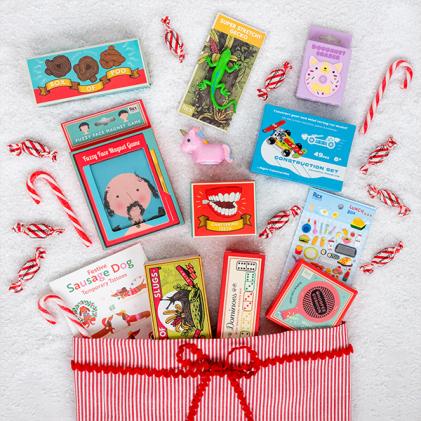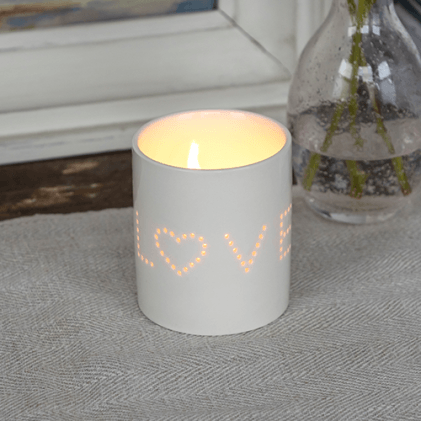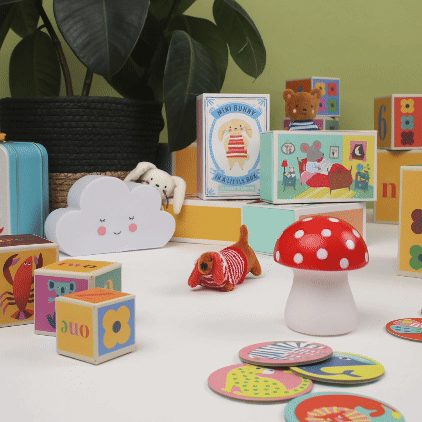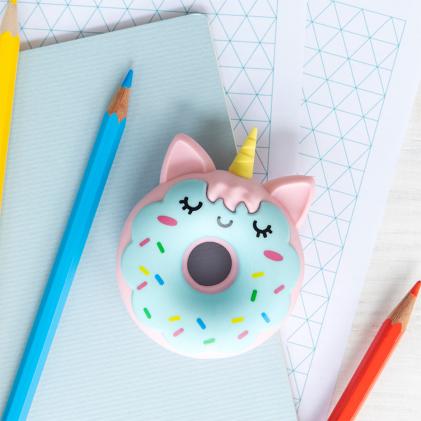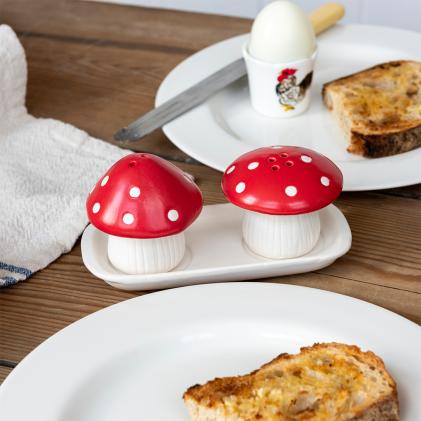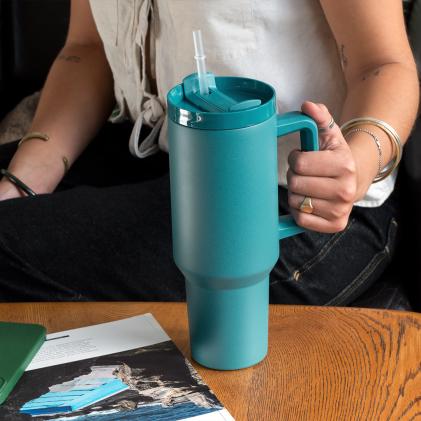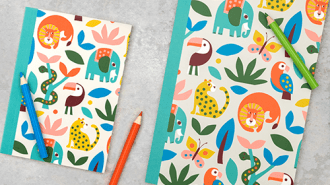Top ten tips for bullet journals
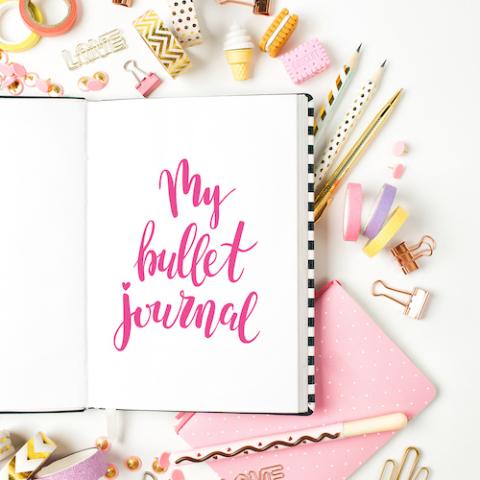
What will your bullet journal look like?
Image: Igisheva Maria
Whether you’re uber-organised or struggling to keep track of your busy life, bullet journaling (or #BuJo for social-media lovers) could be just what you need.
Here’s the lowdown on how and why you’d use a bullet journal, along with a selection of top tips from our favourite expert bullet journalers.
What is a bullet journal?
Brainchild of New-York designer, Ryder Carroll, the bullet journal is a clever, creative system – rather than a ‘thing’. It’s a quick and easy way of keeping track of life, projects, goals and dreams.
Carroll’s method – described step-by-step on the bullet journal website he created back in 2013 – has now turned into a movement of its own. A whole community of BuJo advocates share images of their pretty journals via Instagram and describe their own bullet journal hacks on blogs and videos. There are even entire books dedicated to the subject.
You could think of the bullet journal as a personal organiser for the 21st Century. But it’s more than that. It’s freer, more creative and infinitely more beautiful than the faux-leather-bound organisers of last century.
So how does a bullet journal work?
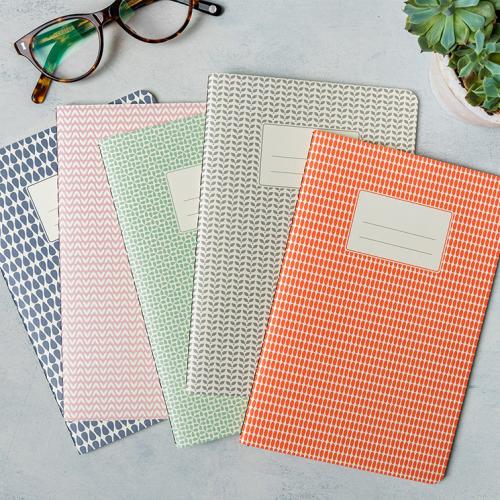
Get started with a pretty notebook
Featured: Abstract A5 notebooks,£2.95 each
Starting your own bullet journal is easy – you just need a blank notebook and a pen. When it comes to what goes inside – page numbers, calendars, days of the week, headings, dividing lines – the entire layout is down to you.
Carroll’s original bullet journal system has these basics:
Bullets. These little pieces of information give the method its name. He recommends a short, succinct sentence for three categories of bullet, each with its own bullet mark: tasks (•), events (□), and notes (–).
Signifiers. Other marks are used to show that a task has been completed (X) or ‘migrated’ (>) to elsewhere in the journal; or to mark something important (*), or worth remembering later on (!). Rookie bullet journalers will need to create a key somewhere in the journal to keep track of all of these squiggles.
Index. Here’s where you make a note of each new section (or ‘collection’ in BuJo speak) in your journal. Unless you get a notebook with pre-printed page numbers, you’ll need to add these to make the index work.
Collections. These are the various sections of your journal. The most basic BuJo has the following collections:
- Future log – where you jot down events way in the future or future plans.
- Monthly log – where you record your month with a simple calendar and a task list.
- Daily log – similar to a diary, where you jot down your tasks for the day ahead. But unlike a pre-printed diary, Carroll recommends you set up daily logs as you go along in case you need more or less space than you imagine.
As the BuJo method has spread and grown, devotees have added tonnes of different collections to the mix, including: a ‘brain dump’ where you can jot down random thoughts; social media stats tracker; blogpost or video planner; mental-health tracker; the list goes on.
Why use a bullet journal?
You might be wondering why the bullet journal has so many fans when you have to do all the hard work yourself. But that’s precisely its appeal. As blogger Beth Sandland says:
“The beauty of a bullet journal is that you are completely in control of the pages.”
The bullet journal is totally flexible. Don’t like the layout of your BuJo? Simply turn the page and change it. Never use that section you thought you needed? Get rid of it. Wish there was something else in there? Create it!
The bullet journal will also relieve you of all that diary-slippage guilt. If you skip a day, a week, or even a month, you just have to turn the page and start again. Because you’re writing the script here, there won’t be swathes of empty pages to flick past for the rest of the year, reminding you of your failings. The bullet journal will forgive you.
Last, but not least, all those blank, empty pages will encourage you to get creative – to doodle and design; to practise your calligraphy; or prettify with highlighters, washi tape, watercolours. If you love it, you do it.
Ten top tips for bullet journals
If you’re thinking this all sounds like hard work, it needn’t be. There’s some great advice from bullet-journal devotees who have done all the trial and error for you. Here are ten brilliant tips to get the most from your bullet journal:
1. Find a journal you love
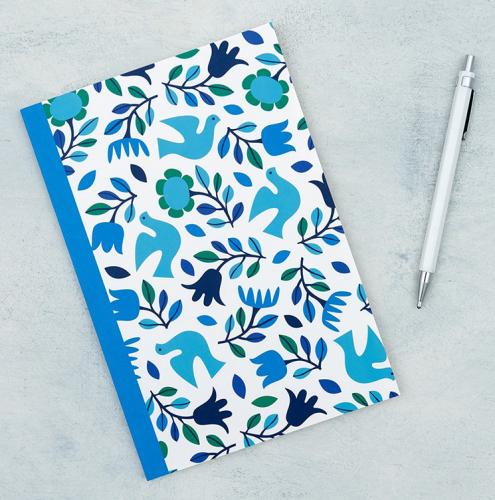
Go stationery shopping!
Featured: Folk Doves A5 notebook, £2.95
Choose a conveniently sized book that's small enough to fit in your bag but big enough to do the job – A5 is perfect.
2. Make your first journal an experiment
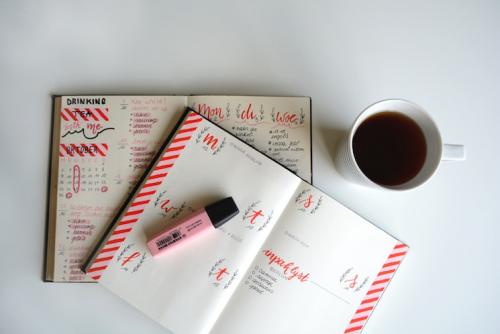
Try lots of different things to see what works best for you
Image: @esteejanssens
Kate of kate la vie advises beginners: “If it’s your first year journaling, use this as a trial year – go all out with pages and lists and trackers, and see what you use and what you don’t. I recommend looking for ideas on Pinterest, there’s some incredible page ideas on there – although most of them are a little complicated for me, it does inspire you to make the most of your journal!”
3. Plan out your journal with post-its
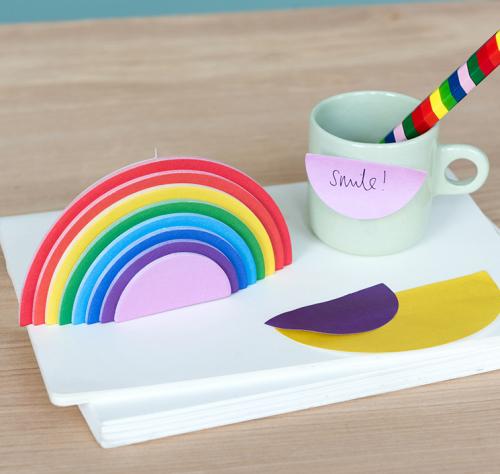
Use different sizes and colours of sticky memos to plan out what goes where
Featured: Rainbow sticky notes, £3.95
“I recommend you make a plan. Get some sticky notes and decide which layouts will be on which pages,” says Claire from Heart Handmade.
4. Don’t obsess about making it pretty
Take this advice from Cherith Harrison: “Being a designer it’s in my blood to make EVERYTHING I take a pen or pencil to aesthetically pleasing, but it is important to remember that your bullet journal needn’t be pretty.… DON’T not start one because you are worried yours won’t look nice as all the ones you see on social media. Bullet journalling is ultimately there to help you organise your life a bit better.”
5. Use stickers to brighten up your journal
“Stickers are another quick and easy way to bring your journal to life. There are also some really practical stickers too which help to speed up your spreads – again great if you're not too confident when putting pen to paper,” says K Elizabeth whose bullet journal has become her creative and therapeutic outlet.
6. Use washi tape to mark out sections of your BuJo
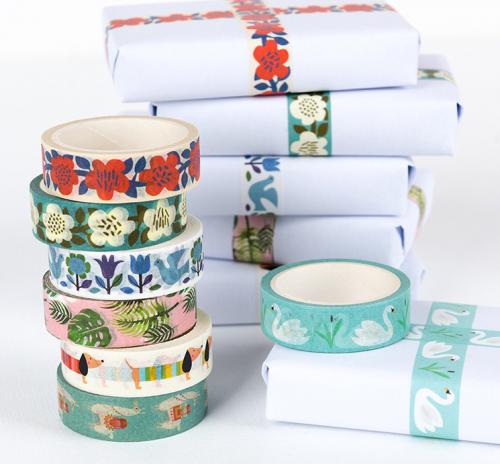
Colour-code pages with pretty washi tape
Featured: Patterned washi tapes, £2.95 each
Use washi tape to draw attention to your most important bullet journal pages, to divide your pages into columns, or to make headings stand out.
7. Use calligraphy to make your pages beautiful
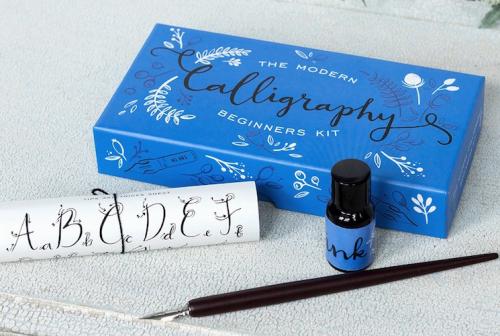
Get creative with calligraphy headings
Featured: Modern Calligraphy Beginner's Kit, £9.95
Bullet journals look great with calligraphy headings – or ‘topics’ as expert journalers call them. Give calligraphy a try with a beginner’s set, like the one from Rex London pictured above.
8. Try banners
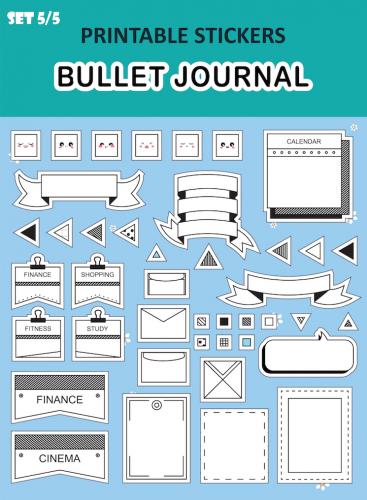
Create your own set of printable banner templates like these
Image: Elena_Nevskaya
If you find fancy writing difficult, try this advice from Kate of Kate Louise: “Banners, banners, banners! What can I say, I love them! I use them to header almost all of my dailies simply because of how easy they are to set up! If you are anything like me and find calligraphy difficult then these are a great solution to heading your pages without the stress of creating the perfect 's' (which I can never draw when attempting some sort of calligraphy lettering).”
9. Use a weekly log to keep you focused
“I don’t religiously keep a weekly list and sometimes I extend them to 2 weeks (if I’ve not achieved anything at the end of the first week – oops). They definitely help me to keep focused for the week, when I don’t keep one, I regret it by Friday, I should probably remember that!” writes Sarah of Taming Twins.
10. Use your journal to achieve long term goals
“At the beginning of the year I decided that there were a few areas in my life that I particularly wanted to focus on and improve. The left hand page just sums up those areas and has some more specific goals for each area. On the right hand page I have created a chart for each goal area and the idea is that I will fill in monthly on how I think I did in that area. I'm obviously hoping to fill each section by the end of the year,” writes Sarah of Sarah’s Chapter.
We hope you feel inspired to give bullet journaling a go. Remember, all you need is a notebook and a pen. Go on, give it a try!

